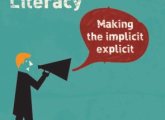With the education trade show themselves bombarded with myriad offers of products and services that all promise to transform their schools. Without expert knowledge or understanding of the market the individuals responsible for buying can sometimes feel justifiably fearful of investing their limited budgets in something that may turn out to be a dud, and this is particularly the case when it comes to buying software, which is often new territory for schools.
Cheryl Drury is director for progress at Waterhead Academy in Oldham, a new-build academy created out of the merger of two local schools, with 1400 students aged 11-16. Relatively new to the school, Cheryl is empowering a key member of staff to begin the process of introducing GCSEPod – mobile learning and revision software with which she has had previous experience. “At my old school GCSEPod could have become that ‘white elephant,’ which would have been tragic given its obvious impact on students’ results,” she observes. “The person who had bought it left the school before really having the chance to introduce it. Rather than see the technology go to waste, I took on responsibility for making it work. Given that I had no knowledge of the system, this could have been quite a challenge had it not been for the support I received from the software provider.”
As a consequence, Cheryl’s advice is always to ask about the level of human support available with any software purchase. “While many software providers do seem to shy away from human contact, having someone there to support you and who understands the unique situation in your school makes all the difference,” she explains. “Not only did the GCSEPod team help me to embed the software in the school VLE, but they also provided sound advice on how to promote it within school and how to drive usage. Having a dedicated person to liaise with also forced me to take time out of my diary for telephone calls and meetings to get the system up and running, without which I would probably have been guilty of putting it off for another day.”
Cheryl also points out the importance of getting everyone involved with any new software. “I have learned from experience and at Waterhead we are ensuring that the resource is used across the curriculum as opposed to being restricted to only one or two subjects,” she comments. “Some teachers are naturally more inclined to use new technology and teaching methods, but it is important that all staff are exposed to it, therefore GCSEPod was a discussion point at the senior leaders meeting and there is a dedicated lead in every department. This is helping staff to become familiar with the software quickly which will have a dramatic impact on usage.”
Clear vision
Paul Cairns, director of new technologies at Archbishop Temple School in Preston, Lancashire recently introduced software content for mobile technology to support the school’s vision of encouraging individual learning. This mid-sized Church of England school for students aged 11-16 had a clear focus on what it was looking to achieve. Paul – a self-confessed technology advocate – is convinced this is why the software purchase has delivered a real return on investment.
“We were keen to harness the power of mobile technology and knew we needed a solution that would allow our students to engage in independent learning outside of the classroom,” he explains. “However, as a mid-sized school our budgets were pretty tight, so we needed software that would allow us to tap into technology that the kids already used – mobile.
“In the past we’ve trialled software which didn’t take off. While there are a number of reasons for this, it’s fair to say that the fault didn’t necessarily sit with the software itself but rather the lack of buy-in from teaching staff. Teachers can generally see the benefit of new software but are so busy in their day jobs that, despite best intentions, they simply don’t utilise it. So on this occasion we decided to take a different approach and rather than promoting the software to our teachers, we sold it to the students. This, I believe, has made all the difference. The students really bought into the software and saw how it could help them individually and, as such, have really driven the new initiative; so much so that in response more and more of our teachers are now using the software themselves to set homework and revision tasks.
“Other advice would be to make sure that the software can be accessed via different platforms – most importantly on mobile devices. It also needs to be intuitive to use. People don’t have time to learn how to use new systems, even if they can see the benefits, so if it seems at all complicated they will give up at the first hurdle.”
“Given the increasing need to demonstrate return on investment, ensuring the software provides a simple reporting framework is essential,” Paul concludes. “We can monitor usage against performance on an individual or group basis and create specific target lists to monitor impact amongst our pupil premium students or particular target sectors. It is difficult for anyone to dispute such data-driven facts and these in turn provide a compelling case for future purchases or renewals.”
- Browse by subject
- Maths & Science
- English & MFL
- Humanities
- The Arts
- I.C.T
- Outdoor Learning










